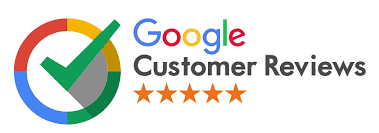Book Review Writing Help – Trusted, Proven, Essential, Ultimate Strategies for High Marks
Book review writing help gives you a practical, ethical, and repeatable system for turning reading notes into a clear, engaging, and well-referenced critique. This guide explains how to plan, research, analyse, and write with confidence so your book review writing help journey leads to higher marks, sharper thinking, and genuinely enjoyable scholarship.
What Is Book Review Writing Help?
Book review writing help is structured academic support that turns a demanding task into a step-by-step process. It covers pre-reading strategies, critical frameworks, planning, drafting, referencing, and editing. The aim is not to replace your learning; the aim is to strengthen it by giving you tools and habits you can reuse across modules.

- Clarity: unpack the brief and write to the rubric.
- Evidence: select and integrate textual proof responsibly.
- Voice: write with confidence, precision, and fairness.
Why Book Reviews Matter in UK Courses
Lecturers assign reviews because they combine reading, analysis, and concise writing. With targeted book review writing help, you learn to read actively, weigh interpretations, and present a balanced judgement. These skills transfer to essays, literature reviews, and dissertations.
- Critical thinking: move beyond plot summary to argument.
- Communication: make nuanced points in limited space.
- Integrity: attribute accurately, avoid speculation, and assess evidence.
The Anatomy of a High-Scoring Book Review
Strong reviews follow a clear, repeatable pattern. The best book review writing help teaches you to hit each part cleanly.
1) Introduction (≈10–15%)
- Hook that situates the book in a debate, course theme, or genre.
- Bibliographic details: author, title, year, publisher/edition (per style guide).
- Thesis: your evaluative claim—not just what the book says, but how well it does it.
- Roadmap: two or three aspects you will weigh (method, argument, style, evidence).
2) Summary with Purpose (≈15–20%)
- Concise, spoiler-aware overview tied to your thesis.
- Select details that set up your evaluation; omit plot mechanics that do not matter.
3) Analysis and Evaluation (≈50–60%)
- Examine claims, structure, concepts, characters, voice, and evidence.
- Quote and paraphrase precisely; explain why passages matter.
- Consider counterarguments to demonstrate balance and rigour.
4) Conclusion (≈10–15%)
- Restate judgement in light of analysis—no new evidence.
- Indicate audience and use-cases (who should read this book, and why).
- Offer one practical recommendation for future research or reading.
Before You Read: Purpose, Context, and Questions
Purpose drives attention. The right questions focus your notes and shape your argument. This is foundational book review writing help.
Clarify Purpose
- What is your assignment asking—summary, critique, comparison, or recommendation?
- What word count and style? What counts most on the rubric?
Context Questions
- How does this book fit the author’s body of work and the genre?
- Which debates (methodological, ethical, political) does it enter?
Guiding Questions for the Read
- What is the core claim—or the problem the book tries to solve?
- What evidence or technique carries the claim (data, narrative, rhetoric)?
- Where are the limits, contradictions, or tensions?
Active Reading and Smart Note-Taking
Active strategies make your drafting faster and your evaluation stronger. This is where book review writing help saves hours.
- Segmented reading: stop after each chapter to summarise in two lines.
- Margin codes: T (thesis), E (evidence), Q (question), C (counterpoint).
- Quotations log: capture page numbers, short quotes, and why they matter.
- Concept map: connect themes, motifs, and structural devices.
Context Research: Author, Genre, and Scholarship
Minimal but targeted research unlocks better insights. Responsible book review writing help keeps context proportionate to the assignment length.
- Author: prior works, stated aims, relevant controversies.
- Genre conventions: what readers expect—and how the book meets or bends them.
- Scholarship: two to four credible secondary sources to triangulate claims.
Critical Frameworks That Clarify Your Thinking
Frameworks make reasoning visible. Choose one or two to guide your book review writing help plan.
Rhetorical Situation (Audience–Purpose–Context)
Ask who the book addresses, what it wants to achieve, and how context shapes choices.
Narrative Analysis (for Fiction and Memoir)
- Point of view and reliability.
- Character arcs and causality.
- Time (order, duration, frequency) and focalisation.
Concept–Claim–Evidence (for Non-Fiction)
- Define key concepts; test the main claim.
- Assess evidence types, methods, and scope.
- Identify what would falsify or change the conclusion.
Lens-Based Readings (where relevant)
- Formalist (how structure creates meaning).
- Feminist, post-colonial, or ecocritical (how power, identity, and environment appear).
- Historiographical (how it engages prior accounts).
Argument, Structure, and Spoiler-Safe Summaries
Your review is an argument supported by textual evidence. The following book review writing help pattern keeps paragraphs purposeful.
Toulmin-Style Paragraphs
- Claim: the point of the paragraph.
- Evidence: quote or paraphrase with a page reference.
- Warrant: why this evidence supports your claim.
- Qualifier: scope and limits (“in early chapters”, “for younger readers”).
- Rebuttal: a fair counterpoint addressed briefly.
Spoiler-Aware Summary
- Summarise to set up evaluation, not to retell the plot.
- Flag unavoidable revelations (“minor spoilers ahead”).
- Prefer thematic overview to ending specifics unless analysis demands it.
Using Evidence: Quoting, Paraphrasing, and Referencing
Markers notice evidence quality and attribution instantly. Ethical book review writing help means precise, minimal quotation and accurate references.
- Quote sparingly: choose short, telling phrases; integrate grammatically.
- Paraphrase faithfully: keep the author’s meaning; cite the page.
- Balance: your voice should dominate; evidence should support.
- Referencing: follow your department guide; if unsure, Harvard (Author–Date) is common.
Genre-Specific Advice: Fiction, Non-Fiction, Poetry, Memoir, Monographs
Fiction
- Evaluate character depth, pacing, world-building, and prose economy.
- Discuss how narrative voice and structure shape theme.
Non-Fiction (Trade and Academic)
- Examine argument logic, evidence transparency, and counterevidence.
- Assess the book’s contribution and limitations in its field.
Poetry Collections
- Consider sound, imagery, form, and sequencing of poems.
- Close-read one or two poems as anchors for your evaluation.
Memoir and Biography
- Assess voice, reliability, scope, and ethical treatment of subjects.
- Note how memory, research, and narrative craft interact.
Academic Monographs
- Scrutinise methodology, literature engagement, and originality.
- Weigh the book’s implications for future study.
Comparative and Thematic Book Reviews
Comparisons deepen analysis by showing differences that matter. Effective book review writing help turns comparison into argument, not a list.
- Choose a single organising question (“Which book better explains X for undergraduates?”).
- Compare like with like: method vs method, structure vs structure, evidence vs evidence.
- Conclude with a decision for a defined audience.
Academic Voice and Style Without the Jargon
You can be rigorous and readable. The best book review writing help favours short sentences, precise verbs, and cautious hedges.
- Replace vague intensifiers (“very”, “clearly”) with specific evidence.
- Define key terms once; use them consistently.
- Keep paragraphs focused; lead with claims, not topic labels.
Ethics and Integrity in Book Review Writing
Integrity builds trust. Ethical book review writing help insists on originality, fair quotation, and respectful engagement—even when you are critical.
- Attribute ideas and passages; avoid patchwriting.
- Represent arguments fairly before you critique them.
- Be transparent about limitations in your perspective and scope.
How Professional Support Works (Book Review Writing Help)
If you want guided, bespoke book review writing help, start by sharing your brief, rubric, and deadline. You can see the simple steps on How It Works, upload your details via the Order Form, and check quick answers in the FAQs.
- Scoping: clarify task, marking criteria, and word count.
- Plan: thesis options, paragraph map, and evidence anchors.
- Draft: spoiler-aware summary, analysis, and balanced judgement.
- Audit: referencing checks, readability, and integrity review.
- Refine: edits for precision, flow, and submission polish.
Time Management and a 24-Hour Rescue Plan
Weekly Rhythm for Calm Progress
- 5–10–5 sprints: set intent (5), draft (10), review (5).
- Daily minimum: one paragraph or one quote analysis.
- Buffer: keep 24 hours for final edits and references.
24-Hour Rescue Plan
- Write a one-sentence thesis that answers the brief.
- Draft a spoiler-aware summary (≤150 words) tied to that thesis.
- Produce two Toulmin paragraphs (claim, evidence, warrant, qualifier, rebuttal).
- Add one fair counterargument and your response.
- Audit references; align in-text citations and list entries.
- Line-edit for clarity; cut filler and repetition.
Templates, Checklists, and Quick Wins
One-Page Planning Template
- Restated question: …
- Working thesis: …
- Three reasons + one counter: …
- Top five passages (page nos.): …
- Section map: intro – summary – analysis – counter – conclusion.
Paragraph Checklist
- Does the opening sentence make a claim?
- Is evidence precise, relevant, and referenced?
- Is the warrant explicit and reasonable?
- Is scope qualified, with a counterpoint addressed?
- Is the citation complete and accurate?
20-Minute Editing Circuit
- Read aloud for rhythm and sense.
- Cut redundancy and vague intensifiers.
- Sharpen topic sentences and links.
- Audit references; fix punctuation and italics.
- Final integrity check.
Common Pitfalls and Fast Fixes
- Plot retelling: replace with thematic summary tied to thesis.
- Unanchored quotes: add a warrant; show what the line proves.
- Overclaiming: use qualifiers and define scope.
- Unfair criticism: represent the book’s intent before evaluating.
- Late referencing: cite while drafting; audit before submission.
Advanced Techniques for Higher-Band Scripts
Mechanism-Focused Evaluation
Explain how the book persuades (structure, imagery, data design), not just whether it persuades. This deepens analysis and earns credit for judgement.
Boundary Conditions
State where your conclusions hold (genre, audience, historical context). Explicit scope reads as intellectual honesty.
Micro-Close Reading
Spend 120–180 words on a single, pivotal passage—diction, syntax, rhythm—and connect it to the whole argument.
Triangulation
Place the book against two credible secondary sources. Show convergence and divergence, then decide which reading best fits the text and evidence.
Marking Criteria and UK Standards: What Rubrics Reward
UK markers evaluate clarity of purpose, critical engagement, structure, evidence use, and integrity. Aligning with these expectations is central to effective book review writing help.
- Focus and relevance: a thesis that directly answers the task and remains visible throughout.
- Depth of analysis: close reading, careful interpretation, and fair handling of counterviews.
- Coherence: logical sequencing of claims; clean signposting between sections.
- Evidence quality: judicious quotation, page-accurate paraphrase, and transparent reasoning.
- Presentation: concise style, correct referencing, and consistent formatting.
Review your brief against these headings. If any feel thin, return to the relevant section of this book review writing help guide and strengthen that part of your draft.
Worked Examples and Model Paragraphs
Example A: Novel (Fiction) – Model Analytical Paragraph
Claim: The novel’s first-person narration creates productive uncertainty that invites reader interpretation. Evidence: Early chapters withhold the protagonist’s motive, offering only sensory fragments (“the wet air pressed at my throat”, p. 14). Warrant: Withholding motive shifts attention to texture and setting, making readers co-authors in meaning-making. Qualifier: This effect is strongest in the first half, before plot demands accelerate. Rebuttal: Some may read the withholding as evasive; however, the later reveal retrofits earlier ambiguity with thematic coherence.
Example B: Academic Monograph – Model Analytical Paragraph
Claim: The monograph’s central claim rests on a narrow dataset that limits generalisability. Evidence: The author draws conclusions about national trends from two urban case studies (chapters 3–4). Warrant: Without triangulation across regions or methods, national inference is premature. Qualifier: The case studies are meticulously executed and useful for theory-building. Rebuttal: The author anticipates this limitation in the conclusion, calling for replication; this candour strengthens credibility even as it constrains the scope of claims.
Example C: Counterargument Block
A common counterview is that the book’s polemical tone undermines nuance. Yet, in passages where the author summarises opposing research fairly (pp. 112–118), the polemic softens into a persuasive synthesis. The review should acknowledge both registers—heat and light—and assess whether the balance serves the intended audience.
Mini Review Skeleton (200–250 words)
- Intro (2–3 sentences): bibliographic details + thesis.
- Summary (4–5 sentences): thematic overview, spoiler-aware.
- Analysis (8–10 sentences): two claims with evidence and warrants; one counterview.
- Conclusion (2–3 sentences): restated judgement + audience + recommendation.
Use this skeleton when you need swift, disciplined book review writing help for shorter assignments.
Referencing Styles and Examples
Different departments mandate different styles. Accurate referencing is a visible outcome of careful book review writing help.
Harvard (Author–Date)
- In-text: (Author Surname, Year, p. X)
- Book: Author Surname, Initial(s). (Year) Title. Place: Publisher.
- Edited Book Chapter: Chapter Author (Year) ‘Chapter title’, in Editor(s) (eds) Book title. Place: Publisher, pp. xx–xx.
- E-book: include DOI or stable URL if required by your guide.
MLA
- In-text: (Surname page)
- Works Cited: Surname, First. Title. Publisher, Year.
APA
- In-text: (Surname, Year, p. X)
- Reference List: Surname, Initial. (Year). Title. Publisher. https://doi.org/xxxxx (if available)
Always check your departmental guide for punctuation and italics. The precise finish signals care and supports the academic credibility of your book review writing help process.
Digital Editions, Accessibility, and Inclusivity
Many students read on e-readers or PDFs. Responsible book review writing help adapts to digital constraints while preserving scholarly precision.
- Page vs location: if page numbers are unavailable, use chapter and section markers consistently.
- Accessible notes: use headings and alt text in your drafts; keep contrast high if you include figures or tables.
- Inclusive language: avoid ableist, gendered, or culturally presumptive phrasing unless analysing quotations; then contextualise respectfully.
- Screenreader-friendly formatting: short paragraphs, descriptive links, and meaningful headings.
Self-Assessment Rubric and Peer Review
Use this brisk rubric to pressure-test your draft. It is a practical extension of book review writing help.
Focus and Thesis (10)
- Clear evaluative thesis in the introduction (0–5).
- Every body paragraph advances that thesis (0–5).
Evidence and Analysis (10)
- Quotes/paraphrases are precise and cited (0–5).
- Warrants explain significance; scope is qualified (0–5).
Structure and Flow (10)
- Logical section order; clear signposting (0–5).
- Balanced counterargument (0–5).
Style and Integrity (10)
- Concise, cautious voice; no patchwriting (0–5).
- Accurate references; formatting consistent (0–5).
Peer Review Prompt: Ask a classmate to read only your first sentences of each paragraph. If they can outline your argument from those alone, your structure is sound. If not, revisit topic sentences using this book review writing help guide.
FAQs
Is book review writing help allowed by UK universities?
Yes—when used ethically. You may seek guidance on planning, structure, reading strategies, and referencing. Your submitted work must reflect your understanding and meet institutional policies.
How long should a university book review be?
Typical ranges are 1,000–2,000 words, but always follow the brief. Good book review writing help tailors depth to word count while preserving balance.
How do I avoid writing a plot summary?
Summarise only what sets up evaluation. Shift quickly to analysis with a claim–evidence–warrant pattern anchored by page-specific references.
Which referencing style should I use?
Follow your module handbook. If unspecified, Harvard (Author–Date) is common in the UK; some departments prefer MLA, APA, or OSCOLA.
Can I include my personal response?
Yes—briefly and with evidence. Link reactions to textual features or methods; avoid unsupported generalisations.
How do I start working with a specialist?
Share your brief via the Order Form, see the simple steps in How It Works, and browse quick answers in the FAQs.
External, Authoritative Resources
- QAA Quality Code for Higher Education – principles and expectations that underpin assessment and academic integrity in the UK.
- Open University: Critical Thinking Skills – concise activities for analysis, evaluation, and reflective judgement.
- University of Leeds Library: Critical Thinking – study-skills guidance that complements this book review writing help guide.
Order Trusted Support
Ready for expert, ethical book review writing help? Submit your brief via the Order Form, explore the process in How It Works, and check the FAQs for fast answers.
Summary
Effective book review writing help gives you a repeatable method for producing concise, balanced, and well-evidenced critiques that align to UK marking expectations. Start with purpose: restate the assignment in your own words and extract the rubric into a short checklist. Establish a working thesis early so you can read with intent. In the pre-reading phase, gather context that actually matters—author background, genre conventions, and one or two credible secondary sources—not an exhaustive biography. Define success before you start and you will collect the right notes, not just more notes.
As you read, summarise each chapter in two lines and keep a quotations log with page numbers and reasons for selection. This turns highlighting into analysis. Choose a critical framework that suits the book and the task: rhetoric for persuasive non-fiction, narrative analysis for fiction and memoir, concept-claim-evidence for academic monographs. Frameworks keep paragraphs focused and help you avoid plot retelling. Use a claim–evidence–warrant pattern for body paragraphs, add sensible qualifiers to avoid overclaiming, and treat at least one fair counterargument to show balance and intellectual honesty.
Structure your review around a tight introduction with bibliographic details and a clear thesis, a spoiler-aware summary that serves the argument, an analysis section that does the heavy lifting, and a conclusion that restates your judgement, names an audience, and offers one practical recommendation. Your voice should dominate; quotations and paraphrases are supporting acts. Attribute meticulously, match in-text citations with your reference list, and follow your department’s style. A three-pass edit—structure, argument, and language—improves clarity, removes filler, and eliminates contradictions. A final reference audit and integrity check protect credibility.
Genre matters. For fiction, focus on point of view, character development, pacing, and how structure produces meaning. For non-fiction, test the logic, transparency of method, use of evidence, and engagement with counterevidence. For poetry, close-read form, sound, and sequencing. For memoir and biography, evaluate voice, scope, and ethical treatment of subjects. For academic monographs, examine methodology, literature engagement, and originality. Across genres, boundary conditions and scope statements read as maturity: tell the marker where your claims hold and where they do not.
When time is short, a 24-hour rescue plan still raises quality: rebuild the thesis, draft a 150-word summary tied to it, write two analytical paragraphs using the Toulmin pattern, add a fair counterview, and complete a reference audit. For future calm, adopt a simple toolkit: a one-page plan, a paragraph checklist, and a 20-minute editing circuit. Combine these habits with authoritative resources such as the QAA Quality Code, the Open University’s critical-thinking hub, and university study-skills pages to keep your work aligned with expectations.
If you need bespoke guidance, ethical book review writing help can accelerate your learning while preserving your voice. Share your brief and rubric, agree milestones, and ask for the reasoning behind structural and referencing choices so you grow with every review you write. With a clear method, credible sources, and disciplined editing, your reviews will be easier to mark, fairer in judgement, and stronger in evidence—exactly the qualities that lead to higher marks.










